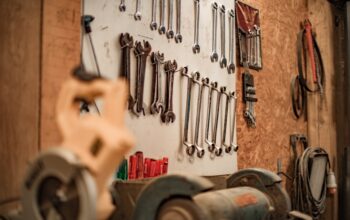Bokuto, also known as bokken, is a wooden training sword used in Japanese martial arts. It serves as a crucial tool for practitioners of various disciplines, including kendo, aikido, and kenjutsu. Designed to mimic the weight and balance of a real sword, the bokuto allows for safe and effective practice of sword techniques without the risk associated with a sharp blade.
The importance of the bokuto in martial arts training cannot be overstated. It provides a means for practitioners to develop their skills, improve technique, and understand the principles of swordsmanship without the danger of serious injury. The bokuto acts as a bridge between traditional sword fighting and contemporary martial arts practice, preserving historical techniques while adapting to modern training methods.
Beyond its practical applications, the bokuto holds significant symbolic value in martial arts culture. It represents discipline, respect, and dedication to the art form. The bokuto embodies the spirit of the samurai and the virtues associated with their code of conduct, such as honor, integrity, and self-discipline.
As such, it is revered by many martial artists as a tangible link to the rich history and traditions of Japanese martial arts. This article will examine the historical origins of the bokuto, its versatility across different martial arts disciplines, its modern applications, the process of training and mastery, and the spiritual and philosophical aspects associated with its use.
Key Takeaways
- Bokuto is a traditional Japanese wooden sword used in martial arts training and practice.
- Bokuto has a rich history and origins dating back to the samurai era in Japan.
- Bokuto is versatile and is used in various martial arts disciplines such as kendo, aikido, and kenjutsu.
- In modern times, Bokuto is used for physical conditioning, self-defense training, and as a tool for mental discipline.
- Training and mastery of Bokuto requires dedication, discipline, and focus, and it can lead to a deeper understanding of martial arts principles.
The History and Origins of Bokuto
Enduring Significance in Japanese Martial Arts
Its design and construction have remained relatively unchanged over the centuries, reflecting its enduring significance in Japanese martial arts. The origins of the bokuto are deeply rooted in the samurai tradition, where the sword held great cultural and spiritual significance. The samurai regarded their swords as an extension of their soul, and the bokuto was no exception.
A Symbol of Honor and Discipline
It was revered as a symbol of honor and discipline, embodying the code of bushido – the way of the warrior. The bokuto was not just a tool for physical training; it was a reflection of the samurai’s commitment to self-improvement and mastery of the martial arts.
A Link to Japan’s Rich Martial Arts Heritage
Today, the bokuto continues to carry on this tradition, serving as a link to Japan’s rich martial arts heritage and the spirit of the samurai.
The Versatility of Bokuto in Martial Arts
The bokuto is renowned for its versatility in martial arts training, as it can be used in a wide range of techniques and disciplines. In kendo, practitioners use the bokuto to practice striking and blocking techniques, as well as footwork and posture. Aikido practitioners utilize the bokuto to simulate sword attacks and defenses, enhancing their understanding of timing and distance.
In kenjutsu, the bokuto is used to practice traditional sword forms and kata, allowing practitioners to refine their technique and precision. The bokuto’s versatility extends beyond traditional Japanese martial arts, as it has found applications in modern combat sports and self-defense training. Many martial artists incorporate bokuto training into their regimen to improve their speed, coordination, and agility.
Its use in sparring drills and partner exercises helps practitioners develop their reflexes and adaptability in combat situations. Additionally, the bokuto’s wooden construction makes it an ideal tool for practicing disarming techniques and close-quarters combat maneuvers.
The Modern Applications of Bokuto
| Modern Applications of Bokuto | Benefits |
|---|---|
| Physical Training | Improves strength, agility, and coordination |
| Sporting Events | Used in Kendo and other martial arts competitions |
| Self-Defense | Effective tool for blocking and striking in self-defense situations |
| Mental Discipline | Enhances focus, discipline, and concentration |
In modern times, the bokuto has found new applications beyond traditional martial arts training. Law enforcement and military personnel use bokuto in close-quarters combat training to simulate real-life scenarios and improve their tactical skills. Its use in scenario-based training allows officers and soldiers to practice defensive tactics and restraint techniques in a controlled environment.
The bokuto’s realistic weight and feel make it an effective tool for preparing individuals for high-stress situations where quick thinking and decisive action are crucial. Furthermore, the bokuto has gained popularity in fitness and conditioning programs, where it is used to enhance strength, endurance, and coordination. Many fitness enthusiasts incorporate bokuto exercises into their workouts to improve their overall physical fitness and agility.
The dynamic movements involved in bokuto training provide a full-body workout, engaging muscles from head to toe. Its use in functional fitness routines has made it a valuable tool for individuals looking to improve their athleticism and martial arts skills simultaneously.
Training and Mastery of Bokuto
Training with the bokuto requires dedication, discipline, and patience to master its techniques effectively. Practitioners must focus on developing proper form, timing, and precision to maximize the benefits of bokuto training. Repetition of basic strikes, blocks, and footwork is essential to build muscle memory and improve technique.
Additionally, partner drills and sparring exercises help practitioners apply their skills in realistic combat scenarios, honing their ability to react quickly and decisively. Mastery of the bokuto goes beyond physical technique; it also involves cultivating mental focus and awareness. Practitioners must learn to control their breathing and maintain a calm mind during training to perform at their best.
The mental discipline required for bokuto training translates into other areas of life, fostering self-confidence, resilience, and determination. As practitioners progress in their training, they gain a deeper understanding of themselves and their capabilities, leading to personal growth and self-improvement.
The Spiritual and Philosophical Aspects of Bokuto

The Reflection of Bushido Principles
The practice of bokuto carries with it spiritual and philosophical significance that transcends physical training. The discipline required for mastering the bokuto reflects the principles of bushido – honor, integrity, and self-discipline. Practitioners are encouraged to embody these virtues both on and off the training mat, striving to live with courage, compassion, and humility.
A Symbol of Self-Improvement and Moral Integrity
The bokuto serves as a reminder of the samurai’s commitment to self-improvement and moral integrity, inspiring practitioners to uphold these values in their daily lives. Furthermore, the practice of bokuto fosters a deep connection with nature and the environment. The wooden construction of the bokuto symbolizes harmony with the natural world, reminding practitioners to respect and appreciate the beauty of the earth.
Cultivating Balance and Interconnectedness
Through mindful training with the bokuto, practitioners cultivate a sense of balance and interconnectedness with all living things, promoting a holistic approach to personal well-being and spiritual growth.
Embracing the Unstoppable Power of Bokuto
In conclusion, the bokuto holds a special place in the world of martial arts as a symbol of tradition, discipline, and resilience. Its rich history and enduring significance reflect its timeless appeal as a training tool for practitioners of all levels. The versatility of the bokuto in various martial arts disciplines highlights its adaptability and effectiveness in developing physical prowess and mental fortitude.
As we embrace the unstoppable power of bokuto, we honor the legacy of the samurai warriors who valued honor, integrity, and self-discipline above all else. Through dedicated training and mastery of the bokuto, practitioners can embody these timeless virtues in their pursuit of personal growth and self-improvement. The spiritual and philosophical aspects of bokuto remind us to live with courage, compassion, and humility, fostering a deeper connection with ourselves and the world around us.
Ultimately, the practice of bokuto transcends mere physical training; it is a journey of self-discovery and personal transformation. By embracing the principles embodied in the bokuto – discipline, respect, and dedication – we can cultivate a deeper understanding of ourselves and our place in the world. As we continue on this journey, let us carry with us the unstoppable power of bokuto as a guiding light towards greater wisdom, strength, and harmony in our lives.
If you’re interested in learning more about aquatic plants, you should check out this article on Limnanthemum. It’s a great resource for understanding different types of aquatic flora and how to care for them in your aquarium. Plus, it’s always fascinating to learn about the diverse plant life that can thrive in water environments, just like Bokuto does in the anime Haikyuu!!
FAQs
What is a bokuto?
A bokuto is a wooden sword used in Japanese martial arts, such as kendo and aikido. It is used for training and practice purposes.
What is the purpose of using a bokuto?
The bokuto is used to simulate the weight and feel of a real sword, allowing practitioners to train in sword techniques without the danger of using a sharp metal blade.
What is the difference between a bokuto and a shinai?
A bokuto is a solid wooden sword, while a shinai is a bamboo sword used in kendo. The bokuto is heavier and provides a different feel and training experience compared to the shinai.
What are the benefits of training with a bokuto?
Training with a bokuto helps practitioners develop proper form, technique, and discipline in their martial arts practice. It also helps improve strength and control.
Can anyone use a bokuto for training?
Yes, anyone practicing Japanese martial arts that involve sword techniques, such as kendo, aikido, or kenjutsu, can use a bokuto for training purposes. However, proper instruction and supervision are essential for safe and effective training.



